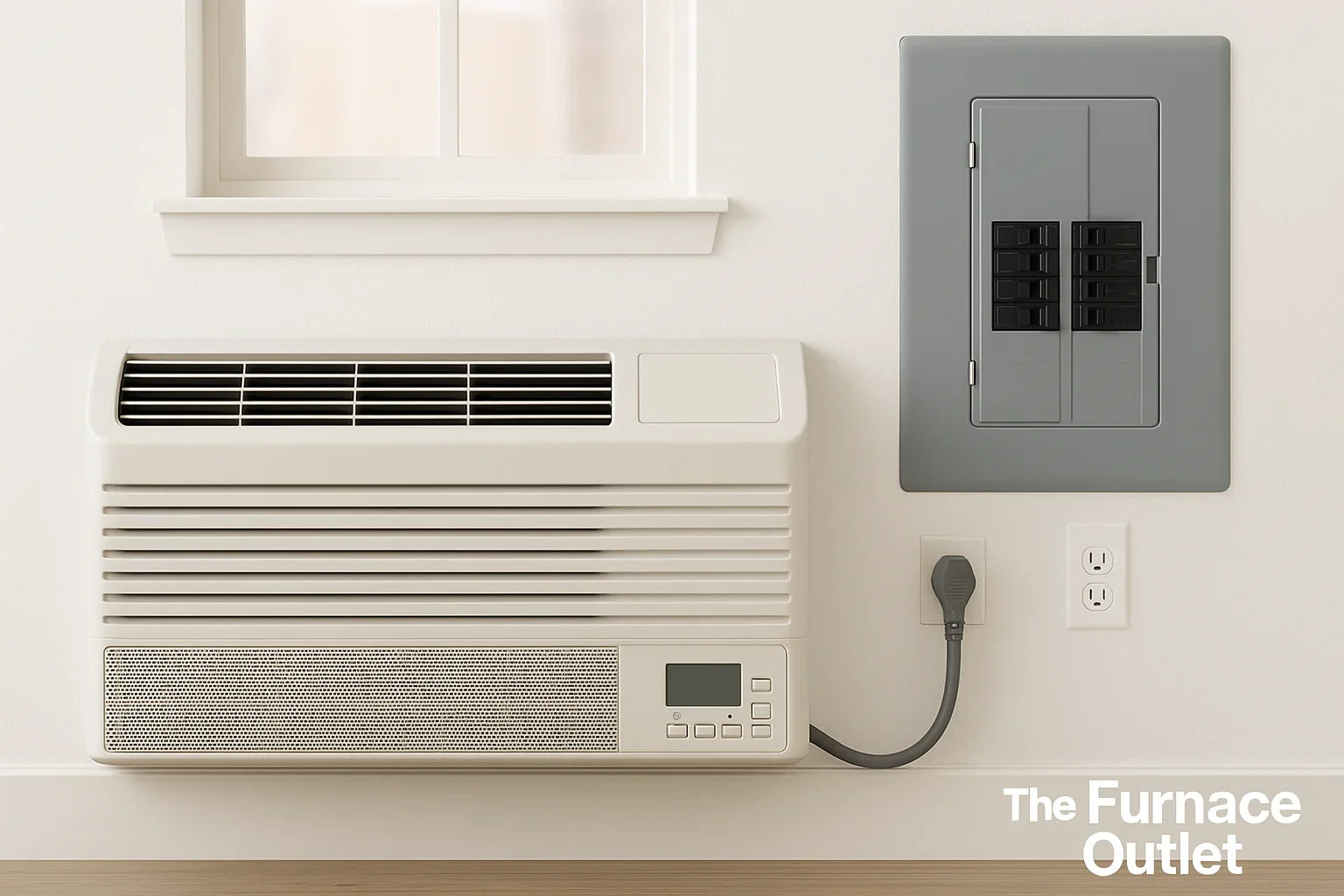Key Takeaways
-
A tight seal around your window or wall AC can trim cooling bills by up to 15 % in summer and stop icy drafts all winter.
-
Swap flimsy accordion panels for rigid foam board (or plywood) to cut heat transfer by half.
-
A slight outward tilt—about ¼ in.—keeps rain out and lets condensate drain.
-
Weatherproof covers and interior foam inserts protect the unit and save energy when the mercury drops.
-
Simple upkeep—clean filters, inspect seals—adds years to your AC’s life and keeps its warranty intact.
Why Tiny Gaps Cost Big Money
Picture a midsummer afternoon: the thermostat reads 78 °F yet warm air leaks around your window AC. Those pencil-thin gaps can waste hundreds of kilowatt-hours a year. Today you’ll learn how to install, seal, and insulate a window or wall unit so well that drafts disappear. The tips come straight from field techs who fit ACs in everything from Brooklyn walk-ups to Phoenix condos timely advice as U.S. energy codes push for tighter building envelopes and rising electricity rates make every watt count.
The Common Problem: Drafts, Noise, and Moisture
Most homeowners slide in the unit, extend the factory side panels, and call it done. Weeks later they feel hot spots, hear street noise, or spot rain seeping in. Those issues matter because leaks force the compressor to short-cycle, eating power and wearing out parts faster. Worse, humid outside air can condense on cold coils, fostering mold. A well-sealed installation eliminates these headaches and keeps your Energy-Star window unit running at its rated efficiency. See our full Sizing Guide for choosing the right BTUs before you begin.
Gather the Right Tools and Materials
You don’t need pro gear—just the correct mix of weatherstripping, closed-cell foam tape, expanding spray foam for odd crevices, and foil HVAC tape for metal seams. Rigid foam insulation board (½ – 1 in.) replaces flimsy side curtains, and a waterproof AC cover guards the exterior in winter.
Keep a level, cordless driver, and sharp utility knife on hand. Pick up extras in our Accessories aisle or scroll The Furnace Outlet’s HVAC Tips blog for specific product reviews.
Seat the Unit Correctly—Level but Slightly Tilted
Follow the manual but add one pro tweak: tilt the chassis about ¼ in. downward toward the outdoors. That tiny drop ensures condensate drains outside instead of pooling and rusting the pan. Check level side-to-side so the compressor runs quietly. For through-the-wall units, make sure the sleeve is square, shim if needed, and seal it to both drywall edges with silicone before inserting the AC.
Seal Gaps with Weatherstripping and Foam
Start inside: run high-density weatherstripping along the sill and jambs where the unit meets the frame. Press closed-cell foam tape under the top sash to block air. Outside, stuff larger cracks with low-expansion spray foam—slow passes prevent messy overflow. Finally, cover exposed joints on the metal case with foil HVAC tape; it flexes with temperature swings and won’t peel like duct tape.
Upgrade Those Side Panels (The Biggest Energy Leak)
Factory accordion wings are thin plastic with a light felt backing—fine for dust, lousy for heat flow. Measure the opening, cut rigid foam board to fit, and press it between the frame and unit. Seal edges with HVAC tape for a vapor-tight barrier. Want a long-term fix? Paint-sealed plywood plus foam weatherstrip outperforms foam board in storm-prone coastal zones.
Winterization: Covers, Interior Inserts, or Full Removal
Once heating season hits, airflow reverses: cold wind sneaks in. Slip on an insulated, waterproof cover outdoors (choose one that fits snugly to avoid rattling). Indoors, slide a foam insert over the grille or remove the unit entirely and close the window. Pairing a cover with interior foam cuts heat loss to near-zero and guards coils from road salt—vital for seacoast homes and anyone using through-the-wall heat pumps.
Pro Tips to Boost Year-Round Efficiency
-
Activate energy-saving mode or program a timer when rooms are empty.
-
Shade the unit with an awning on south-facing walls; tests show a 2 – 3 °F drop in coil temperature.
-
Clean or replace filters every 30 days; dirty media can slash airflow by 20 %.
-
Consider upgrading to an R-32 window unit for higher SEER2 and lower global-warming potential.
For multi-room cooling, our techs often steer customers to DIY ductless mini-splits—they mount through a 3-in. hole, sidestepping window leaks entirely.
Maintenance & Monitoring for the Long Haul
Inspect seals each spring: press a smoking incense stick around the frame; if smoke wavers, re-seal. Tighten mounting brackets annually—vibration can loosen screws. Outside, keep leaves clear so the condenser coil breathes. For wall units, inspect caulk lines and repaint sleeves as needed to block rust. Record model and serial numbers inside your maintenance log or snap a photo—handy when ordering parts from our Help Center or reading our detailed PTAC sizing chart.
Frequently Asked Questions
Q: Does spray foam void my AC warranty?
A: No foaming the window frame, not the AC cabinet, keeps the unit serviceable. Avoid blocking drain holes.
Q: Is it worth removing a window AC every winter?
A: Yes, if you can. It seals the opening completely and extends unit life, especially in snowy climates.
Q: Can I use bubble wrap or towels instead of foam board?
A: They help briefly but don’t meet fire or weather codes. Rigid foam or plywood is safer and insulates better.
Q: How often should I replace weatherstripping?
A: Check yearly; UV and compression wear it down. Most strips last 2 – 3 seasons.







